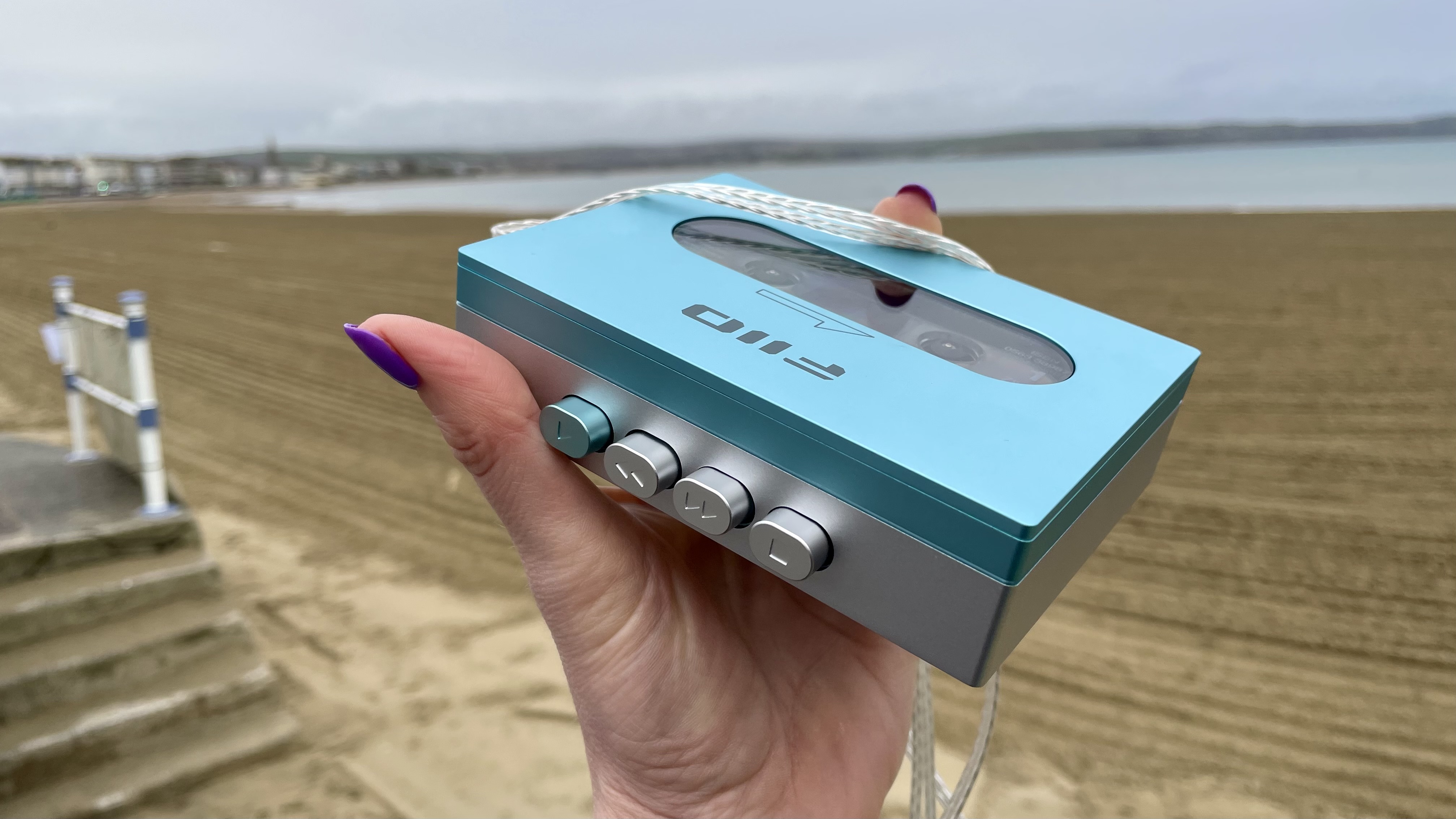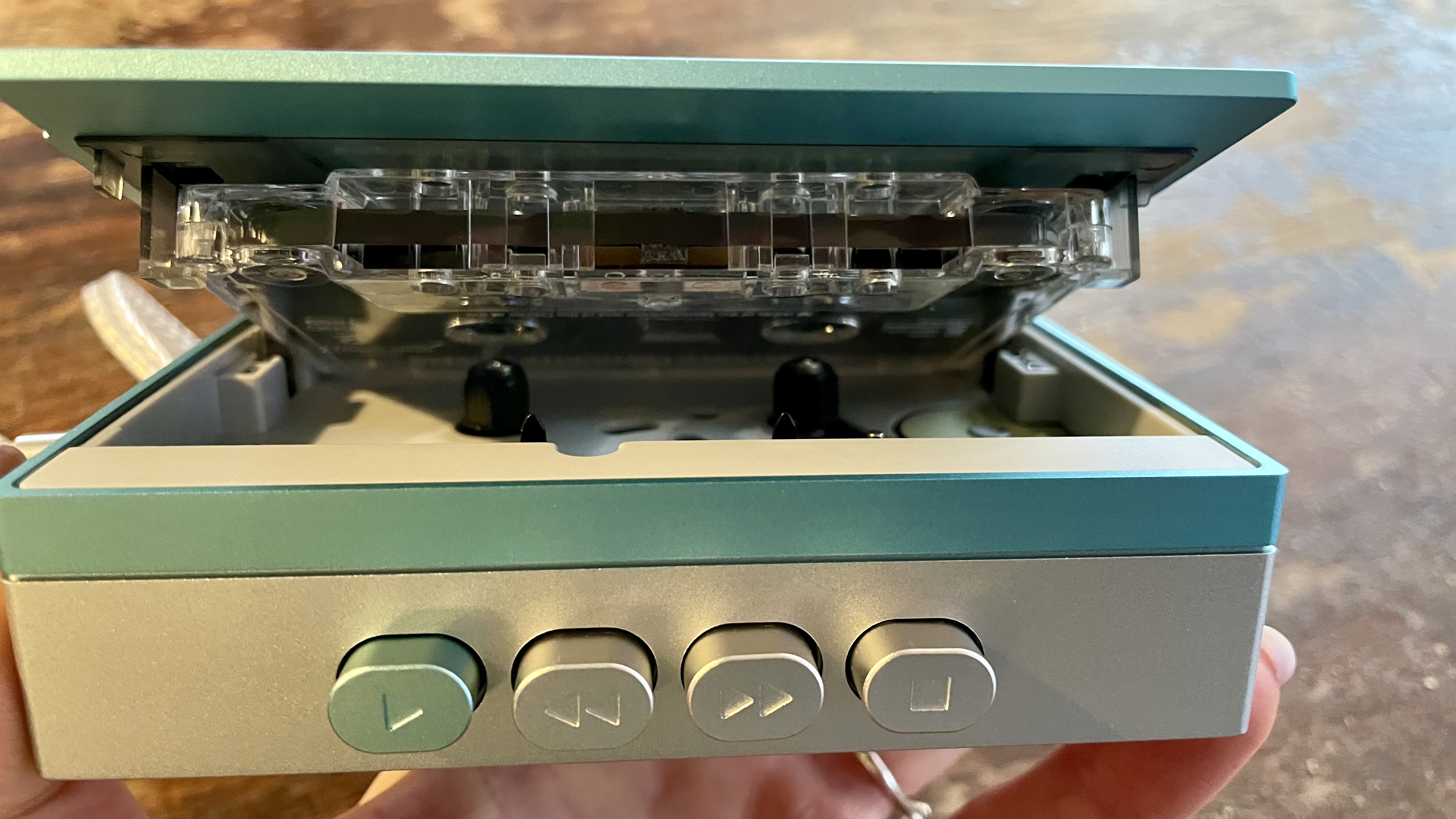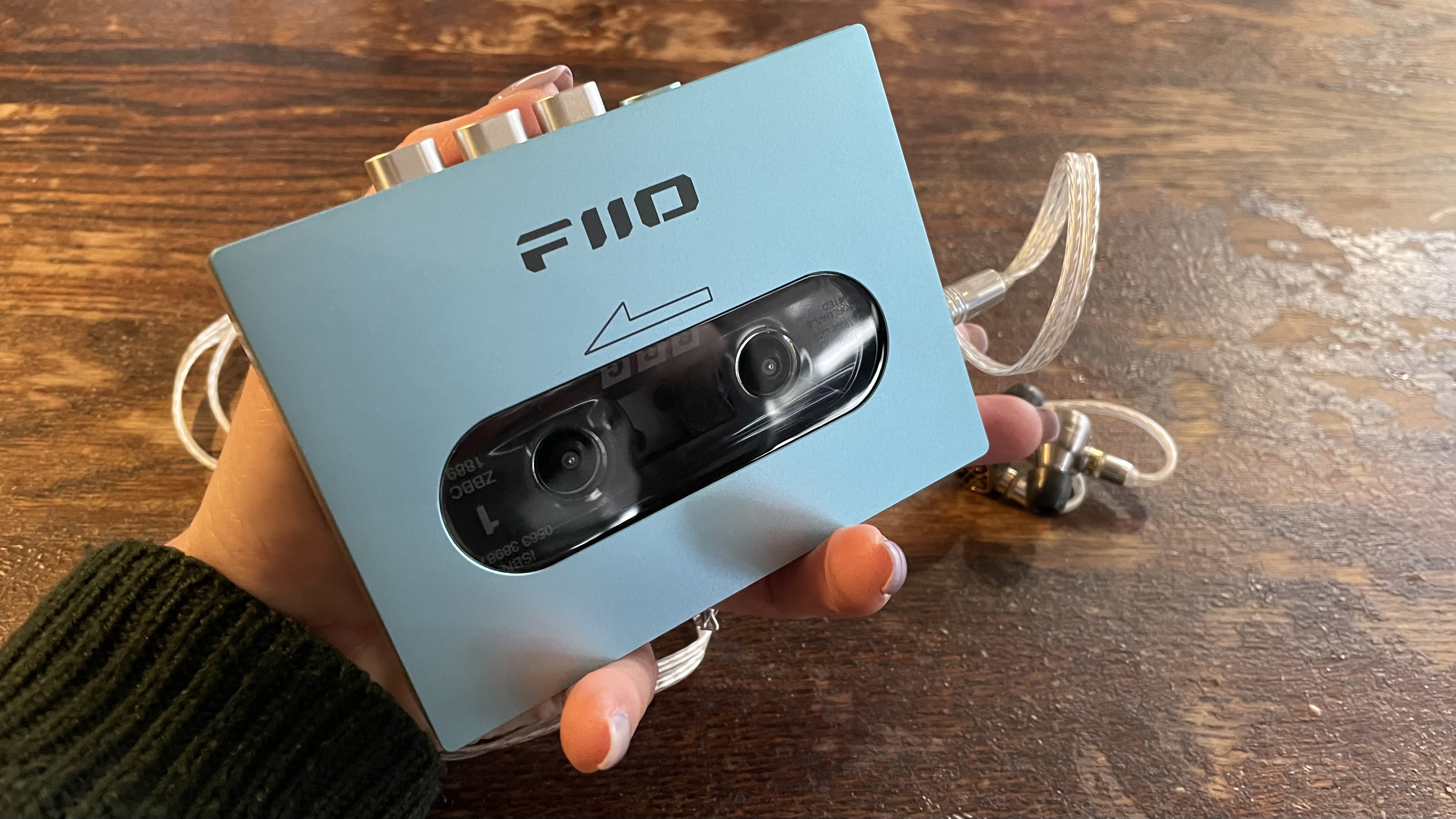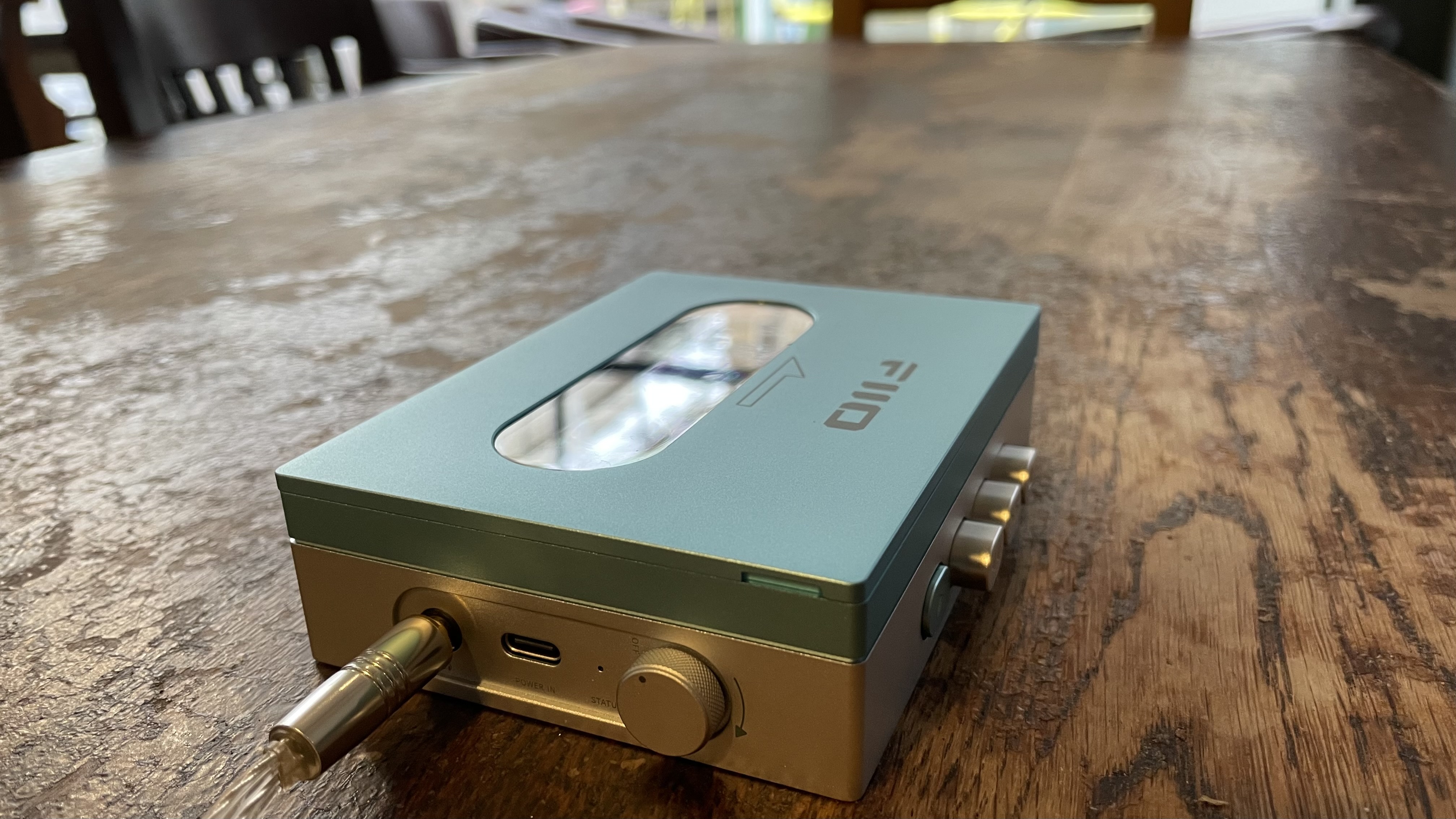Cassettes are back in a big way – and not just because FiiO's ode to the Sony Walkman is aces
(That does help though)

Before you write in: yes, I was around when the 1979 TPS-L2 Sony Walkman arrived. I loved it. I also know the necessity of the HB pencil – you'd better believe the one time I took that key piece of audio equipment from the glove compartment of my mum's Citroen 2CV6, with its Audioline tape deck, there was hell to pay. Finally, I vividly remember Julia Roberts singing to Kiss in the movie Pretty Woman, as her Walkman balanced precariously on the edge of the bath in a bathroom that (and I quote) was bigger than the Blue Banana. Check, check, check. I'm qualified to talk about cassettes!
And I'm here to tell you that both cassette tapes and Walkmans are back in a big way. I don't mean Sony's reimagined digital audio players such as the Sony NW-A306 either (although that is one of the best hi-res audio players around in the affordable arena), I mean portable tape players that accept tangible polyester-type-plastic-film-with-magnetic-coating tapes.
My recent personal quest to build my tape collection beyond the much-played and largely decaying albums of my youth – Roxette's Tourism, Janet Jackson's Rhythm Nation 1814, Prince's 1999, INXS Kick, Les Négresses Vertes' Mlah, Robert Palmer's Heavy Nova, you get the era – also strongly suggests tapes are far from retro, quaint or passé. In fact, they're in huge demand. But look at me getting ahead of myself.
Never gonna give you up

We covered the FiiO CP13 launch at CES, at the start of the year, but at that point, we weren't allowed to take one with us. That has now changed – and frankly, now I've got one I never want to give it up.
The only real tech update FiiO has implemented here is the only one I wanted to see: a USB-C charger instead of a battery recess, offering up to 15 hours of playtime on a full charge. I'd have liked to see dual 3.5mm headphone jacks (which you can now get in ZTE's Nubia Music Phone) but I don't miss the lack of Bluetooth transmission. I listened to it mostly using the Campfire Audio Solaris Stellar Horizon, but it also drove the Audeze Euclid just fine.
The large buttons offer a reassuring mechanical clunk when pressed. Fast-forward and rewind make the supply- and take-up reels spin smooth as butter and although FiiO remains coy about the tape head it's used here, the overall build feels sturdy and rock-solid. It's nothing if not angular mind; forget curved edges, Sony's 1979 Walkman didn't have 'em, so neither does FiiO's love letter to it. Although some write-ups talk about an 'Auto-reverse' feature (which just means that your tape automatically rewinds once its end is reached) my sample neither says it on the case nor supports it.
Black Cat, nine lives, short days, long nights




FiiO's marketing for this player is a little, er, wellness-centric, involving a user calmly removing the wrapper from a color-coded tape (part of a curated selection that can arrive with my version of the CP13, if you want), and listening to a classical selection.
Sign up for breaking news, reviews, opinion, top tech deals, and more.
This isn't how I see it, of course. I see my 10-year-old self ripping the funk cassette I need from my mum's car and shoving it into my Walkman, then popping and locking down the street in my own private dance rehearsal. I see 12-year-old me struggling to talk to people in school, and instead immersing myself in Janet Jackson's Black Cat lyrics. I see arguments, interactions, knocks and bumps, and above all, a young life set to music.
I did the aural time capsule thing; yes, I listened to every tape I still own. I filled a bag with tapes and took the CP13 for a long walk along the Weymouth Dorset seafront. En route, I went into every vinyl dealership, vintage outlet, and thrift store I passed. Everywhere I went looking to add to my collection, the answer was the same: "Cassettes – music ones? No chance. As soon as we get 'em in, they go like hot cakes".
A vintage store owner mentioned that his vinyl supplier is now dealing in cassettes as well as records, owing to "fresh and fervent demand". A thrift store volunteer told me a young man had come in only yesterday and paid the princely sum of £5 for "every music cassette you've got".
Nothing lasts forever, even cold November rain

Why is this happening? Well, in the UK at least (which is where I reside) it's been in the cards for a while. According to the Official Charts Company, nearly 65,000 music cassettes were sold in the UK in the first six months of 2020. As noted by the BBC at the time, the OCC says this figure was double that of the cassette sales recorded during the same period in 2019. And ITV has since reported that 2022 saw around 195,000 tapes sold, representing a yearly growth of 5.2%, according to the British Phonographic Industry (BPI).
I respect cassettes – and I say that despite caring about audio quality. The cassette tape is more durable than a CD for toting around (anyone who remembers trying desperately not to touch their CD when changing albums on a busy train carriage – and ultimately dropping it – can relate) and the sound is distinctive. Personally, I like that the physical condition of your tape affects its sound; I like that nothing lasts forever (even cold November Rain). I also enjoy the warmth and marginal hiss of magnetic tape – and because I've done all the tests to know that my ear is highly sensitive to treble frequencies, the dampened highs often work for me. If an album's been mixed for it, I also find taking a hit on dynamic range actually offers a more expansive soundstage than that of CD.
Perhaps the kids want retro. But maybe they want to collect something that can be acquired for very little money (I was able to buy a double-tape for 20p on my travels, which is around 27c); perhaps vinyl is becoming too expensive and pricing out would-be collectors; perhaps our youth wants to switch off from social media. Maybe, they just want something real.

FiiO is best known for its excellent and affordable high-tech hardware, including a selection of hi-res DACs, the excellent FiiO FT5 and FT3 over-ear headphones, a hi-res audio keyboard (yes, keyboard) and most recently the five-star R9 just-add-speakers bijou music streaming box. For me, the CP13 is another huge hit. It is refreshingly easy to use (there's literally no setup required) and makes the physical music product supremely portable again.
Right, I'm off to Bandcamp. I simply must have more tapes.
You may also like
- Want the FiiO? See our pick of the best wired headphones to pair it with
- A cheap turntable with Audio Technica parts and Bluetooth for the price of a record? It’s real
- See our pick of the best Sony headphones

Becky became Audio Editor at TechRadar in 2024, but joined the team in 2022 as Senior Staff Writer, focusing on all things hi-fi. Before this, she spent three years at What Hi-Fi? testing and reviewing everything from wallet-friendly wireless earbuds to huge high-end sound systems. Prior to gaining her MA in Journalism in 2018, Becky freelanced as an arts critic alongside a 22-year career as a professional dancer and aerialist – any love of dance starts with a love of music. Becky has previously contributed to Stuff, FourFourTwo and The Stage. When not writing, she can still be found throwing shapes in a dance studio, these days with varying degrees of success.